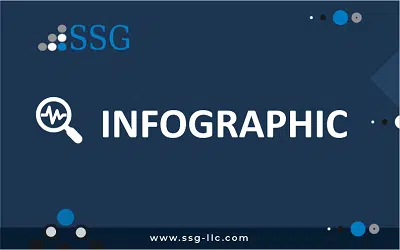Public Health Infographic: Understanding Public Health Surveillance Systems | SSG

Public health surveillance enables local, state, and federal government organizations to monitor and quickly respond to emerging health trends, which can help save lives.
What are Public Health Surveillance Systems?
Public health surveillance systems collect, analyze, and interpret health-related information related to a specific population. The data collected can include the following:
- Lab records
- Immunization data
- Social media posts and trends
- Lab testing and diagnostic results
- Web forums, message boards, and other public platforms
The organization can use this information to learn more about what’s driving the trend and how it is affecting a specific population, including:
- The number of reported cases of a particular illness or disease
- The symptoms and conditions associated with infection
- What kinds of individuals are most likely to be at risk of serious illness
- How infections can be prevented
- The success and outcomes related to various treatments and vaccines
Once the organization has interpreted the data, it will use its findings to implement policies designed to reduce the infection rate. Depending on the outbreak’s severity, these policies may be mandated or voluntary.
How Do Public Health Surveillance Systems Work?
Public health surveillance systems must complete several steps to comply with the latest reporting guidelines. The surveillance system includes: various government agencies, epidemiologists, and healthcare providers.
- Private companies and healthcare providers must share information about the latest health trends with their assigned public health surveillance system.
- Data analysts at the surveillance system will organize the data into a comprehensive report.
- The team will assess the report’s accuracy and remind providers and companies to share their findings if they haven’t done so already.
- Once the report has been compiled, local, state, and federal governments will decide how this information should affect public policy.
Public health surveillance is ongoing. The data only provides a snapshot in time, so the process must be repeated regularly.
- Private companies and healthcare providers must continue to share their findings with public health surveillance systems.
- Data analysts will interpret the data to see how the trend has changed and look for possible errors that could affect the report’s accuracy.
- Policymakers will then assess the public health data to see if the current policies are working as intended.
